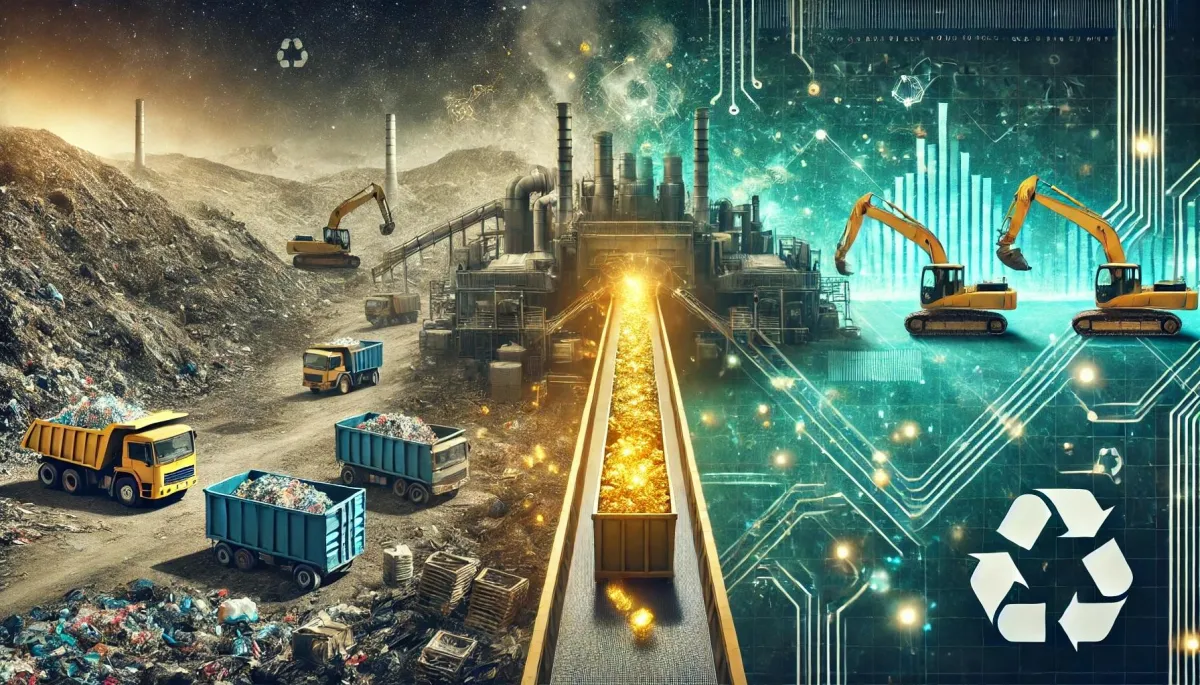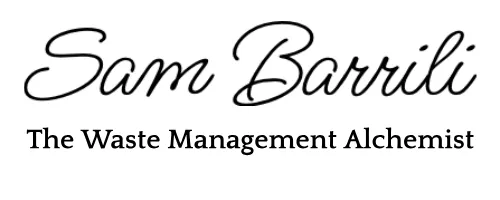Articles

From Junk to Jackpot: The Untold Story of How Modern Tools Are Making Millions from Secondary Raw Materials
Let’s get straight to the point: technology is changing everything in waste management.
As an owner in this industry, you’ve probably seen this firsthand—traditional methods simply don't cut it anymore. They’re either too slow, too inefficient, or too costly, leaving valuable materials unrecovered and profits unrealized.
Today, however, powerful new sorting and processing technologies have emerged, dramatically boosting the efficiency, profitability, and scalability of your secondary raw material (SRM) recovery efforts. Companies that adopt these innovations early have a significant competitive advantage, capturing more revenue, reducing operational costs, and establishing market leadership.
Here are the core cutting-edge technologies transforming SRM recovery:
Sensor-Based Sorting (SBS): Sensor-based sorting systems use advanced technologies such as near-infrared spectroscopy (NIR), X-ray fluorescence (XRF), and optical sensors to identify and separate valuable materials with incredible speed and precision. Practical benefit: these systems dramatically increase purity levels and maximize the economic value of recovered materials, translating directly into higher market prices and stronger profit margins.
Magnetic and Eddy Current Separation: Advanced magnetic separation effectively isolates ferrous metals, while Eddy Current separators recover non-ferrous metals like aluminum and copper with remarkable efficiency. Practical benefit: These technologies quickly boost the volume and quality of your recovered metals, significantly increasing revenues and operational throughput.
Robotic Sorting Systems: Robotic arms equipped with AI-driven visual recognition technologies can identify, sort, and separate waste at rates far surpassing manual labor, working accurately 24/7 without fatigue or quality loss. Practical benefit: these robotic systems reduce labor costs, dramatically improve sorting efficiency, and consistently maintain high-quality recovered materials.
Density-Based Sorting Technologies: Technologies like air classifiers and hydrocyclones effectively separate materials based on density differences. They're especially powerful for complex mixed streams, such as electronic waste and shredded industrial waste. Practical benefit: density-based sorting maximizes recovery rates of high-value metals and plastics, converting challenging waste streams into profitable revenue sources.
As someone firmly on your side, let me assure you clearly: adopting these technologies strategically and proactively will place your business ahead of competitors who still rely on outdated methods, increasing your profitability, efficiency, and market leadership.
[Book a 20 Minutes Free Consultation]
How Automation and AI Are Revolutionizing Waste Management
Let’s cut straight to reality: automation and artificial intelligence (AI) aren’t future possibilities—they're already transforming the waste management industry today. As an industry insider dedicated to helping waste management companies thrive, I’ve observed directly how businesses integrating automation and AI quickly distance themselves from the competition, achieving higher profitability and operational stability.
The advantages are clear and significant:
Increased Operational Efficiency: AI-driven systems continuously optimize sorting and processing, significantly reducing downtime and maximizing throughput. The result is higher volume handling with fewer errors, reduced labor costs, and increased overall productivity.
Consistent Quality and Higher Material Value: Automation ensures consistent material purity and quality, allowing you to command higher market prices. This quality assurance directly boosts your market reputation, attracting more lucrative buyers and long-term contracts.
Reduced Operational Costs and Increased Safety: Automating repetitive, hazardous tasks reduces worker injuries, insurance costs, and labor expenses significantly. Your employees can be reallocated toward higher-value, strategic roles, further enhancing your company’s efficiency and productivity.
Real-Time Operational Optimization: AI-driven monitoring and analytics provide instant feedback on performance, enabling real-time adjustments for maximum profitability. This agility helps you quickly respond to shifting market demands, pricing fluctuations, or regulatory changes.
For example, advanced recycling facilities leveraging AI-enabled sorting systems have achieved 20–30% improvements in operational efficiency within just months of implementation. Their profitability grows as they capture more market share and lock in long-term contracts thanks to their reliability and high material purity.
I firmly advise you to take a proactive stance—by leveraging automation and AI technologies strategically, your business will become more profitable, resilient, and competitive in the long run.
[Book a 20 Minutes Free Consultation]
Investing Wisely in Future-Proof Technology
Finally, let’s clearly discuss how to invest wisely and strategically in these innovative technologies. I fully understand that as a business owner, your decisions must always balance investment risks with immediate and long-term profitability.
Here are clear guidelines I recommend to invest effectively:
Conduct a Comprehensive Needs Assessment: Clearly identify the specific inefficiencies, bottlenecks, or material recovery challenges your business currently faces. This ensures you select technologies that directly impact profitability and operational efficiency.
Choose Scalable, Modular Solutions: Invest in flexible, scalable technologies. Modular systems can be expanded and upgraded easily, allowing your operation to evolve strategically alongside market demands and technological advancements without massive re-investment.
Prioritize Technology With Clear Economic Returns: Your investments must generate clear, measurable ROI. Prioritize technologies proven to improve material recovery rates, reduce operational expenses, and quickly increase marketable product quality and value.
Develop a Clear Implementation Roadmap: Establish a strategic implementation plan, including clear timelines, employee training, system integration, and operational transition. Ensure your entire team understands clearly how the new technology directly contributes to profitability and stability.
Establish Strategic Partnerships and Support: Select technology suppliers who provide robust support, training, and ongoing maintenance. Strategic partnerships reduce risks and accelerate your operational benefits, ensuring consistent returns from your investment.
Let’s speak candidly—there is risk in every investment, but the greater risk lies in not investing. Companies that hesitate to upgrade their capabilities face reduced profitability, declining competitiveness, and eventual obsolescence. Your strategic advantage comes precisely from proactively adapting to these technological innovations.
[Book a 20 Minutes Free Consultation]
Final Thoughts: Technology as a Strategic Growth Driver
From my perspective, as someone deeply familiar with your challenges, technological innovation isn’t merely beneficial—it’s strategically essential for your profitability and long-term survival. The waste management landscape is evolving quickly, and companies that effectively leverage advanced sorting technologies, automation, and AI will lead the industry.
Let me reassure you clearly: adopting these innovations positions your business for immediate profitability gains and long-term success. By proactively embracing technological innovation, you don’t just stay ahead of the curve—you set it, securing your position as an indispensable industry leader.
The time to act clearly and decisively is now.
To Your Success
Sam Barrili
The Waste Management Alchemist


Sam Barrili
I'm known as the go-to guy for talking about business strategies and growth strategies for waste management companies.
I started my journey in this field in 2009 when I finished my degree in Toxicological Chemistry and joined a wastewater treatment company to develop its market.
Since then, I helped dozens of waste management companies in America and Europe increase their annual profits by over 25 million dollars thanks to my SAM Method.
If you want to know if I'm a good fit for you, read an article or watch a video.
If you find it helpful, I’m probably a good match.
If not, that's OK too.
Call +1 (801) 804-5730
Email: [email protected]

